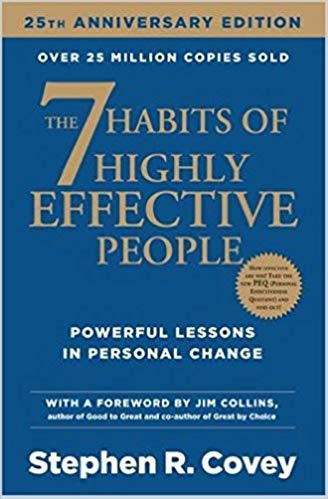

This article is an excerpt from the Shortform summary of "The 7 Habits of Highly Effective People" by Stephen Covey. Shortform has the world's best summaries of books you should be reading.
Like this article? Sign up for a free trial here .
How does Stephen Covey define synergy (habit six)? How does synergy relate to the previous five habits?
According to Stephen Covey, synergy is the culmination of the first five habits. You need a deep conviction of your principles and values, a Win/Win paradigm, and the skills to develop and nurture effective interdependent relationships.
Read more to learn about Covey’s concept of synergy, its benefits, what it entails, and how to improve your ability to synergize.
Habit 6: Synergy
Communicating synergistically means opening your mind and heart to different realities and possibilities. This requires vulnerability and comfort with (or at least tolerance of) uncertainty and some level of chaos; in its essence, synergy is a creative process—you’re working with others to create new possibilities—and that means you don’t know what the outcome will be when you start the process. You’re not entering the situation to push your proposition or blindly accept the other person’s, but rather to come up with a third alternative.
Sometimes situations devolve into chaos instead of evolving into synergy, and those negative experiences can make the people involved skittish about opening up in the future to the possibility of synergy. For example, this can happen when a company creates policies that give employees the freedom to allocate some of their time to develop new ideas—as long as they still get their work done in a timely manner—but a handful of people abuse it and scare executives into reforming or revoking the policy.
Additionally, many people have paradigms that cause them to mistrust other people and interact in protective or defensive ways. Often these people only have brief glimpses of synergy, such as when people come together in an exceptionally cooperative and collaborative way in response to an emergency. These events can seem like rare, extraordinary occurrences, but with the right approach you can experience synergy regularly.
View People’s Differences as Opportunities for Growth
To foster synergy, you must view a person’s differences as assets—rather than roadblocks—to creating something new and innovative; someone who has the same view and opinion as you adds nothing to your knowledge and perspective, but someone with a different view gives you the opportunity to expand your perspective and come up with solutions that would never have occurred to your otherwise.
Everyone sees the world through their own paradigms; that means no one’s view is objective, including yours. If you think you see the world objectively, then you’ll think that anyone who sees things differently is wrong. But if you understand that your—and everyone else’s—lens of the world is determined by individual paradigms, then you can value and appreciate that other people’s views can broaden your (admittedly limited) understanding of the world.
In fact, if you truly understand that your view of the world is limited by your lens, then it’s easy to see why you need to consider and integrate other people’s perspectives so that you can approach life with more complete data. If you were trying to map the stars and were confined to the view from where you live, would you reject images of the night sky that someone sent you from another part of the world because they looked different than the photos you took? Or would you use them to expand your map?
Synergy Eliminates Barriers to Change
In order to make lasting change in your life, you need to make changes that foster that growth while also eliminating the factors that are limiting growth. Synergy is especially effective at minimizing the negative forces that push back against positive growth.
The sociologist Kurt Lewin uses the Force Field Analysis as an analogy to explain: The performance level in any given situation is at an equilibrium between the driving forces and restraining forces. Driving forces encourage progress and are typically positive, logical, conscious, reasonable, and economic. Restraining forces restrict growth and change, and are generally negative, illogical, unconscious, emotional, and social or psychological.
Imagine you want to create a more positive climate in your family’s home; you feel your children are too competitive among one another, the level of trust between parents and children is lower than you’d like, and everyone has developed some bad habits in their daily interactions. Your positive, logical, conscious desire to improve your family’s culture is a driving force, but that will only get you so far—and most likely the effects will be largely temporary—unless you also work to eliminate some of the negative, emotional, and psychological restraining forces at play.
The more change you try to create by focusing solely on driving forces, the harder it will become to make progress—like if you were pushing a metal spring back, and the tension kept building until finally the pent-up force of the coils bounce back against you. When you use synergy to tackle a problem, you see differences and challenges as opportunities to create new insights and possibilities, which actually transforms restraining forces into driving forces.
For example, a land developer is working on a project that has faced major delays, and the developer has fallen so far behind on his payments that the bank wants to foreclose. In turn, the developer sues the bank to avoid foreclosure. The developer and the bank are caught in a conundrum: The developer needs more money to finish the project so he can get a return and repay the bank, but the bank refuses to lend him any more money until he catches up on his current payments—and all the while, the project is falling further behind.
Tension is high by the time the developer meets with the bank officials, but he approaches the meeting with Habits 4 (Win/Win), 5 (understand the other side before trying to be understood), and 6 (synergy) in mind. The developer writes down all the bank’s concerns, and, seeing his effort, the officials open up and clarify to help him fully understand their perspective. After this process, the officials have been given enough psychological air to be open to listening to the developer’s concerns. The mutual understanding both sides gain through Habits 4 and 5 motivate them to turn their shared stress and financial concerns (restraining forces) into a logical, conscious effort (driving force) to find a synergistic solution that benefits everyone.
Interdependent Synergy Starts with Internal Synergy
According to Stephen Covey, synergy with others requires that you have synergy with yourself (internal synergy). How do you have synergy with yourself? What is there to synergize?
Some people let their left brain lead them through life, taking logical approaches to all situations; but sometimes the problems you encounter in life are emotional or creative problems that call for right-brained solutions. Other people lead with their intuitive, creative right brains, but encounter the inverse issue when dealing with analytical and logical problems. Life is a balance of both the logical and the emotional, and you need synergy between both sides of your brain to effectively adapt.
Have you ever had a relationship in which one person is emotionally driven and the other is intellectually driven? What happens when you have an interpersonal conflict? One person tries to express her concerns in feelings, while the other person is asking for concrete examples and evidence of the problem. If both sides of your brain are engaged, you can better understand and respond to the other person, and integrate both emotional and logical aspects in your solution.
Checklist: Improve Your Ability to Synergize
In order to create synergy, you need a solid foundation of the previous habits and a determination to keep an open mind to the other person’s perspectives and desires. Follow these steps to start practicing synergy in your own life.
- Think of an area in our life where you want to create better synergy. What conditions need to change to make that possible? How can you change and create those conditions?
- Write a list of people who irritate you. Then look at each person: Does she have different perspectives that you could use to create synergy? How do you need to change your approach in order to foster that synergy?
- Think of a person in your life who often has a different perspective than you. What are some ways you could use those differences in order to find third alternatives? Is there a project or problem you’re working on in which you could ask for her perspective to give you another lens of the issue?
- Next time you disagree with someone, stop and try to understand her concerns before moving forward. Then try to work through each of those concerns to come up with new solutions that benefit you both.
———End of Preview———

Like what you just read? Read the rest of the world's best summary of "The 7 Habits of Highly Effective People" at Shortform . Learn the book's critical concepts in 20 minutes or less .
Here's what you'll find in our full The 7 Habits of Highly Effective People summary :
- How to prioritize the hundred tasks you have to focus on the one or two that really matter
- The right way to resolve every disagreement and argument
- How to avoid burning out and succeed over 20+ years






